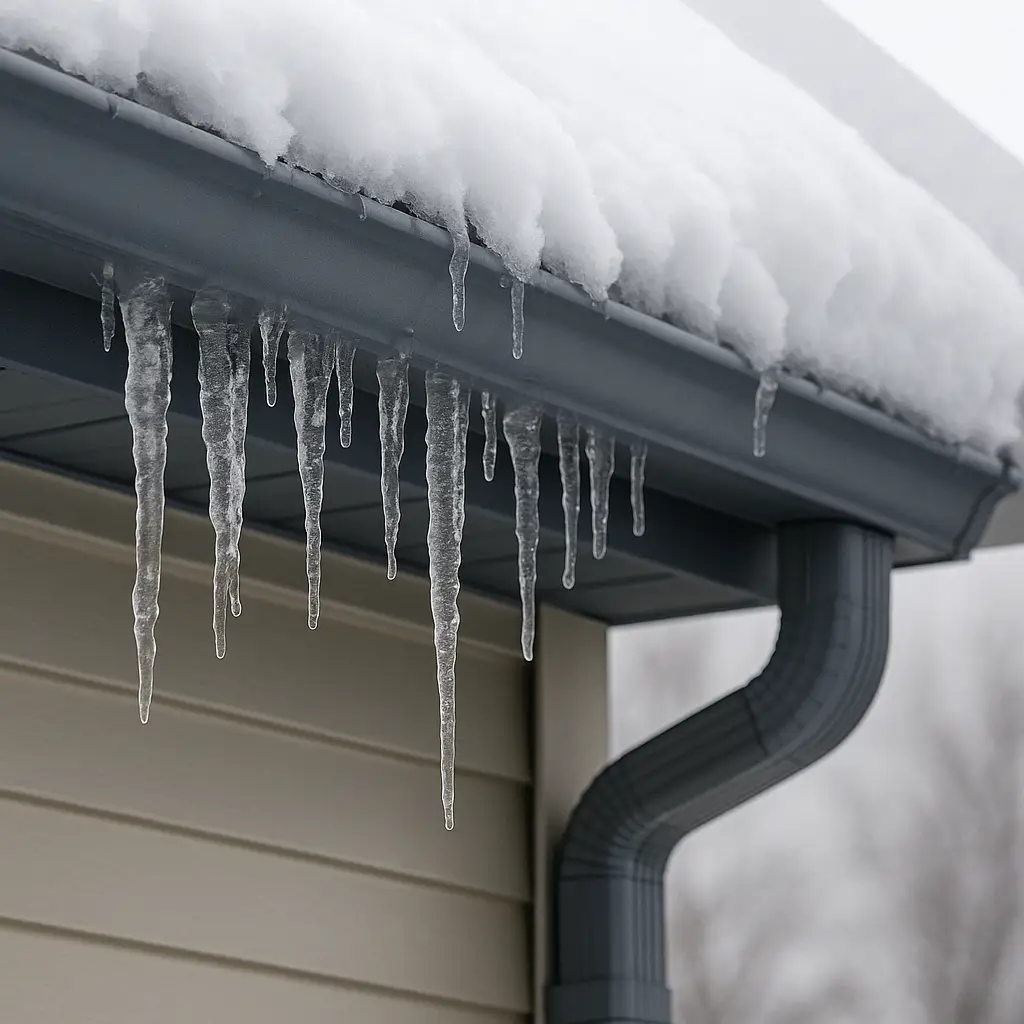
On a typical house with a 2,500-square-foot roof, just one inch of rain will produce an incredible 1,500 gallons of water. Picture 27 barrels around your home, all dumping at the same time — and you’ll understand how important a well-designed and working eavestrough system is to your house.
As critical as it is for your gutters to handle a heavy rain, it’s just as important to manage the smaller, steady rains. A consistent drip or leak can rot wood just as surely as a heavy overflow.
Ice and snow create their own problems. A drippy gutter can lead to icy sidewalks, and ice buildup can pull gutters away from your home or form ice dams that cause roof leaks.
Water is far and away the biggest threat of property damage. Heavy rains that overwhelm poorly designed or clogged gutter systems can cause erosion in your landscaping, foundation cracks, and even basement flooding. But it doesn’t have to pour hard to cause damage — many rotted fascia boards and wood frames come from continuous wetting during everyday showers.
A properly installed and maintained gutter system catches rain from your roof and carries it safely away from your home. At Sunrise Seamless, we design every system to handle Michigan’s weather and protect your home year-round.
Clogged gutters can be worse than no gutters at all. When water can’t escape through the downspouts, it overflows in concentrated areas — eroding soil and damaging siding or foundations. Gutter protection systems like our Leaf Terminator and Gutter Topper products keep water moving where it belongs.
Every winter, we get calls from homeowners concerned about ice. Some have brand-new gutters and worry they’re causing ice buildup; others have old or no gutters and hope a new system will solve their problem. The truth is, ice formation happens on all kinds of roofs — covered, uncovered, or even those with no gutters.
Ice forms when melted snow from the warm part of the roof runs down and refreezes at the colder roof edge. This occurs because of heat loss from inside your home or from sunlight warming the shingles.
Common heat-loss points include roof valleys, vents, skylights, cathedral or vaulted ceilings, and where a lower roof meets the wall of an upper story. Even well-insulated homes can have these problem areas, as they’re often impossible to vent or insulate perfectly.
Good insulation and ventilation are the best defense. Proper insulation minimizes heat escaping into the attic, while good ventilation helps release the little heat that does get through.
The longer snow sits on your roof, the more ice can form — especially when vents get blocked or roofs trap warmth. Ice can pull gutters loose, allow water behind fascia, or even tear the system completely off your home.
You can reduce risk by using a roof rake to clear the first 2–4 feet of your roof edge after a storm — just beyond the overhang. For known heat-loss spots, clear that entire section down to the shingles for best results.
Every home and every winter is different. That’s why Sunrise Seamless takes the time to inspect your home’s roofline and gutter system to find the true source of ice or water issues. We’ve helped homeowners across Lansing, East Lansing, Holt, Okemos, Mason, and surrounding areas protect their homes from water damage for over three decades.
Whether you’re dealing with storm damage, ice issues, or foundation leaks, we have the right solution — and the experience to do it right the first time.
Request Storm Response or Inspection